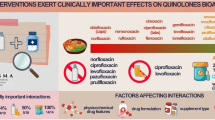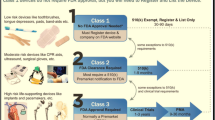Abstract
Combination products (CPs) combine two or more product types such as drugs, devices, and/or biological products for increased safety and clinical effectiveness. The emergence of innovative CPs poses new challenges for regulatory agencies in assigning jurisdiction for premarket review and oversight. In US, the 1990 Safe Medical Devices Act defines and provides classification criteria for CPs, and the US government has developed a regulatory process through multiple acts, including the 21st Century Cures Act of 2016. Meanwhile, regulators in the European Union (EU) and the Republic of Korea have recently recognized the importance of premarket pathways for CPs. The European Medicines Agency (EMA) has issued guidelines and explanations on compliance issues related to drug–device CPs under MDR. EMA doesn’t have the definitions of CPs, but uses the term drug–device combination products (drug-device CPs). CPs are categorized as drugs or medical devices, which follow their relevant regulatory framework. The Ministry of Food and Drug Safety (MFDS) in Korea has legal definitions of CPs under the Notice of the MFDS. CPs are designated as drugs or medical devices according to their primary mode of actions (PMOA) and follow regulatory processes through the framework of drugs or medical devices. This study aims to comprehensively summarize the regulatory oversight of CPs by analyzing the regulatory policies and legal frameworks in the US, the EU, and Korea. The regulatory challenges encountered when developing CPs are also discussed. With specific emphasis on the combination of drugs and devices, this study provides in-depth insights into the regulatory landscape, shedding light on the unique challenges associated with the development of CPs for this particular intersection of drugs and devices.


Similar content being viewed by others
References
Staples M, Daniel K, Cima MJ, et al. Application of micro- and nano-electromechanical devices to drug delivery. Pharm Res. 2006;23:847–63. https://doi.org/10.1007/s11095-006-9906-4.
Wu P, Grainger DW. Drug/device combinations for local drug therapies and infection prophylaxis. Biomaterials. 2006;27:2450–67. https://doi.org/10.1016/j.biomaterials.2005.11.031.
Global Drug Device Combination Products Sales Market. Industry reports. 2021. https://www.marketgrowthreports.com/global-drug-device-combination-products-sales-market-17828984. Accessed 15 Jun 2021.
Kotha V, Elphine P, Rao NR, et al. Regulatory strategy for registration of combination products to US-FDA. Int J Drug Regul Aff. 2014;2:27–42. https://doi.org/10.22270/ijdra.v2i3.139.
Uemura N, Kasanuki H, Umezu M. New visualization models of designation pathway and group categorization of device-drug and device-biologic combination products classification in the United States: analysis of FDA capsular decisions. Ther Innov Regul Sci. 2021;55:807–17. https://doi.org/10.1007/s43441-021-00276-x.
FDA Proposes Intercenter Consult Request Process (US). Pract Law. 2021. http://uk.practicallaw.thomsonreuters.com/w-002-9513?transitionType=Default&contextData=(sc.Default)&firstPage=true. Accessed 1 Jul 2021.
FDA Pilots Intercenter Process For Combination Product Reviews. 2021. https://www.meddeviceonline.com/doc/fda-pilots-intercenter-process-for-combination-product-reviews-0001. Accessed 1 Jul 2021.
EUR-Lex-32017R0745-EN-EUR-Lex. 2021. https://eur-lex.europa.eu/eli/reg/2017/745/oj. Accessed 14 Jun 2021.
Schillinger D. The office of combination products: its roots, its creation, and its role. 2005. https://dash.harvard.edu/bitstream/handle/1/8852096/Schillinger05.html?sequence=2. Accessed 30 Jun 2021.
Federal Register, Volume 61 Issue 168 (Wednesday, August 28, 1996). 2021. https://www.govinfo.gov/content/pkg/FR-1996-08-28/html/X96-10828.htm. Accessed 30 Jun 2021.
Commissioner O of the Acts, Rules and Regulations. FDA. 2018.
CFR—Code of Federal Regulations. Title 21. 2021. https://www.accessdata.fda.gov/scripts/cdrh/cfdocs/cfcfr/cfrsearch.cfm?fr=3.2. Accessed 30 Jun 2021.
Chowdhury N. Case study on borderline medical products in Europe. In: Chowdhury N, editor. European regulation of medical devices and pharmaceuticals: regulatee expectations of legal certainty. Cham: Springer International Publishing; 2014. p. 141–59. https://doi.org/10.1007/978-3-319-04594-8_8.
Masterson F. Factors that facilitate regulatory approval for drug-device combination products in the European Union and United States of America: a mixed method study of industry views. Ther Innov Regul Sci. 2018;52:489–98. https://doi.org/10.1177/2168479017735142.
Hrabovszki G. Medical device regulation comes into application. Eur Med Agency. 2021;2021:10.
Definition of Primary Mode of Action of a Combination Product. Fed Regist. 2005. https://www.federalregister.gov/documents/2005/08/25/05-16527/definition-of-primary-mode-of-action-of-a-combination-product. Accessed 1 Jul 2021.
Commissioner O of the Classification of Products as Drugs and Devices and Additional Product Classification Issues. US Food Drug Adm. 2021. https://www.fda.gov/regulatory-information/search-fda-guidance-documents/classification-products-drugs-and-devices-and-additional-product-classification-issues. Accessed 1 Jul 2021.
Funding
This research was supported by a Grant (21153MFDS431) from the Ministry of Food and Drug Safety in 2021.
Author information
Authors and Affiliations
Corresponding author
Ethics declarations
Conflict of interest
The researchers declare no conflicts of interest.
Additional information
Publisher's Note
Springer Nature remains neutral with regard to jurisdictional claims in published maps and institutional affiliations.
Rights and permissions
Springer Nature or its licensor (e.g. a society or other partner) holds exclusive rights to this article under a publishing agreement with the author(s) or other rightsholder(s); author self-archiving of the accepted manuscript version of this article is solely governed by the terms of such publishing agreement and applicable law.
About this article
Cite this article
Kim, J.H., Kwon, S., Seol, J.E. et al. Regulatory Framework for Drug-Device Combination Products in the United States, Europe, and Korea. Ther Innov Regul Sci (2024). https://doi.org/10.1007/s43441-024-00661-2
Received:
Accepted:
Published:
DOI: https://doi.org/10.1007/s43441-024-00661-2




